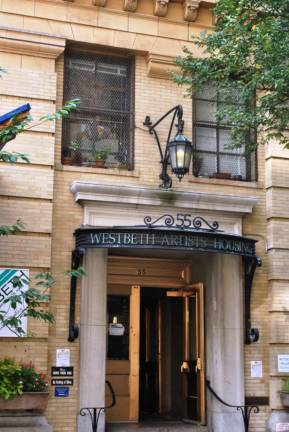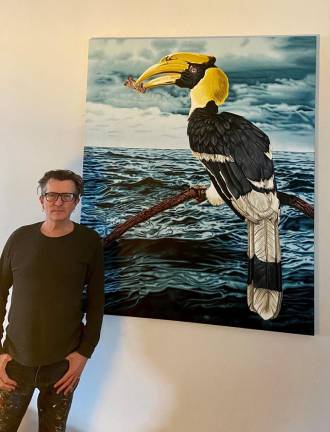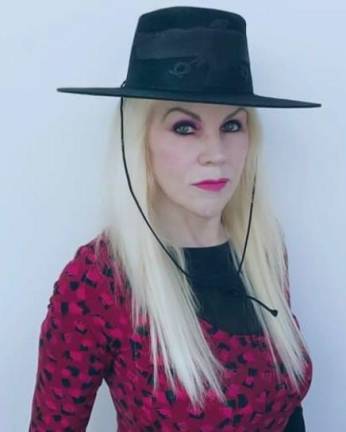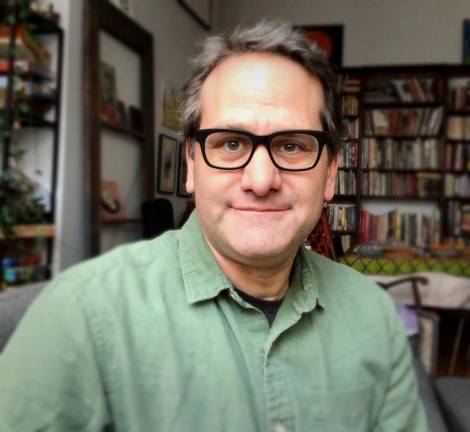Living the Westbeth Life
Residents of the downtown artists’ housing reflect on their home and work spaces




“[It is] really the best, greatest moment of your life.”
After decades on a waitlist, residents like Karen Santry recall a seemingly destined, life-changing moment: getting a phone call from Westbeth Artists Housing.
For any artist in New York, rent is often a roadblock to creative work in the city. Many artists dream about the day they are offered a loft in the West Village for a fraction of the neighborhood’s average rent.
It is rare to find a place like Westbeth, a 52-year-old housing complex named for its location at the intersection of Bethune and West Streets. The nonprofit is one of the few spaces that financially and emotionally supports artists at any point in their creative careers, providing residents with both housing and workspaces. The building helps free artists from many of the financial stressors that prevent them from prioritizing their creative work. Once off the waitlist, most never leave.
Yet describing the building itself is a near impossible task, as it encapsulates the roaring, creative, and mystical quality of New York, in addition to creating a community of connected values. Many of the artists who arrive would not be able to imagine their lives without the financial freedom Westbeth provides. Beyond providing loft-style housing for artists, there are gallery spaces, studios and events hosted in the building. Its fascinating history begins with its purchase from Bell Laboratories in the 1960s. After renovation, it opened to its first residents in 1970.
“Your Number Really Did Come Up”
Current Westbeth residents clearly remember the day they got the call letting them know a space for them was available in the building. Decades of anticipation convinced many the call might never come, and they were overjoyed to receive it. Santry, a contemporary fine arts painter, illustrator and associate professor, describes the day with disbelief, first believing it was a prank call from friends.
“They have to convince you that, ‘no, no, your number really did come up. It’s been 20 years, but we have a place for you,’” said Santry.
Stephen Hall, a contemporary painter with a recent emphasis on climate change, who has been a resident for 23 years, waited for 15 years on the waitlist. Ethan Mass, a cinematographer of both creative pursuits and commercial films, only moved in six years ago after waiting since the mid-1990s for his call.
Hall said, “Westbeth has been such a gem and a life support, because your rent is often dependent on how much money you make in the year. If I struggled at times, when I was two months, maybe three months behind on my rent, I’d get told, ‘Stephen, it’s okay, just let us know what’s going on. We know your painting will sell again, and you’ll catch up.’ That’s happened a couple of times.”
Mass said of himself and his wife, “it really did make it possible for us to grow as a family while staying in Manhattan.” The location is critical to their work, and the spacious lofts provided room for their children.
Westbeth provides spaces for residents to create and show their work. A studio space in the sub-basement allowed Santry to work in the building.
“I was allowed to be down there as long as I was doing something three-dimensional,” she said. Every night, Santry would work in the makeshift studio, and over time she took over new and improved studio spaces.
“It was a wonderful studio; I couldn’t believe my good luck. I spent my first 20 years working on artwork and not so much getting to know people at Westbeth because I was also teaching full-time at the Fashion Institute of Technology. After I got the hang of that, of going back and forth, I slowly started meeting people, and I love the people,” Santry said.
“I’ve met so many wonderful people in Westbeth ... They’re very, very nice and they all have different types of art backgrounds,” said Santry. “After I retired, which is just now, I have more time to understand the workings of Westbeth.”
She could hear dancing in the studio above her loft and explained the magic of having an annual festival fill the building with dancers, including in unused hallways and staircases.
“Neighborhood Within a Neighborhood”
Westbeth functions with an Artists Residence Council and a Board of Directors. The internal community of residents supports one another in both career and personal development.
“It’s a neighborhood within a neighborhood, in a way, when you start to see a lot of the same people around the hallways,” said Mass. “Just like in a neighborhood, I’m sure there are people who live there, people have been in your neighborhood that you never bumped into,” Mass said. “Then there are some that you sort of somehow are on the same life schedule with, and you find them in the elevators or around the halls or in the lobby, and those become kind of part of your community.”
These interconnected aspects of life help residents maintain active personal and professional lives. “My favorite things to do here, besides having dinner and interacting with the people, are the activities that we have here are out of this world,” said Santry. “On Thursdays and Fridays, I go singing ... I work on committees when they need posters or when they need artwork.”
“Now, this summer, we’ve had three, if not four, fantastic music festivals and it’s all been jazz,” Santry added. “On Friday night, from 6 to 8 outside in the courtyard, we’ve had professional musicians that live in Westbeth, and they have worldwide reputations.” With exercise programs and a low-cost fresh food program, Westbeth appears to an outsider as a utopian place to live.
“Free Spirit”
Hall spoke about raising a child in the building. “When I first moved in, I had a smaller space, about 600 square feet, I was a single man, and I would just paint all day and go out and play around the East Village at night and come back and start again,” Hall said. Now, his daughter has also found this community to be an essential part of her life. “[She] is growing up among a bunch of creative people. She’s a free spirit and she’s encouraged to be that way by the building, by us, and the community,” Hall said. “It’s wonderful. Everybody knows her. Everybody knows us. People look out for her ... She learned to ride her bike out in the courtyard.”
Although he knows the building has its inevitable faults, the generations living in the building create multiple perspectives as well. As new spaces open up, residents begin to learn from one another, and children like Hall’s bring excitement to the building.
“[There] is nothing really generic about the neighbors and the residents of the building,” said Mass. “You share an elevator ride with somebody, and they always have something interesting about them. There’s a lot of personality in the residents.
“There is a mindset of accommodation that I really like... there’s an atmosphere of encouragement. It welcomes self-expression.”
Longtime residents of Westbeth experience other parts of the life cycle in their building as well.
“It’s like living in a village within The Village, you know, and all that entails a sadness as well,” explained Hall. “When you see some of the older residents you got to know pass away.”